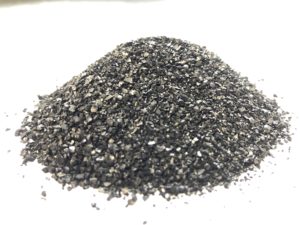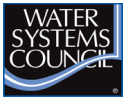Water municipalities are required by law to disinfect water that is to be used for public consumption. For most of the 20th century, chlorine and chloramine have been added to public drinking water because they are strong oxidizers and disinfectant agents. Although the chlorine residual in water is delivered at a low and safe concentration, it can still cause taste and odor issues and can be corrosive to metal plumbing fixtures over time. Water municipalities that use surface water sources in their systems require higher levels of disinfectants because of increased organic matter and microbiological activity. This often leads to excess levels of these disinfectant agents that can lead to the formation of nasty disinfectant byproducts like trihalomethanes.
For a time, municipalities started to prefer chloramine over chlorine because it tended to produce less disinfection byproducts. According to the EPA, 1 in 5 Americans use drinking water treated with chloramine. The most common treatment option for chlorine removal is the use of activated carbon. People have been using carbon for water purification for thousands of years to improve the taste of drinking water. Activated carbon is available in a number of forms including granular, powdered, and cartridge forms. Activated carbon is produced from high carbon content material including peat, coal, wood, and coconut shells. Its unique physical properties make it an excellent adsorption media due to its high surface area and porosity that binds disinfectants, organics, detergents, and even pesticides. A article from Water Conditioning and Purification Magazine provides a more in depth look into Catalytic Activated Carbons for Dechlorination and Dechloramination.
Removing chlorine and chloramine can both be accomplished through the use of activated carbons, but require a slightly different approach. In both cases, granular activated carbon is the most appropriate approach for either a point of use or point of entry system. For chlorine removal, Master Water Conditioning makes both flow-through and back-washing units found here. Our treatment system uses an Acid Wash Coconut Shell based Granular Activated Carbon (GAC) that absorbs the chlorine from the water. GAC requires 3.5 gallons per minute flow rate per cubic foot of media. In fact, 1 cubic feet of our media treats approximately 1 million gallons of water. The benefits of dechlorinating your water include sparkling great taste, irritation free bathing and showering, and protection for plumbing fixtures and appliances. Dechlorinating your water will also extend the life of Cation Exchange Resin in your water softener. For chloramine removal, Centaur catalytic carbon is required. Removing chloramine includes all the same benefits of chlorine removal, but requires a 2.5 gallon per minute flow rate per cubic foot of media. Contact your water municipality to determine whether they use chlorine or chloramine during disinfection to determine which approach is best. You can learn more about our dechlorination units here. For more information on Chloramines, here is a Fact Sheet provided by WQA. WQA Chloramine Fact Sheet










